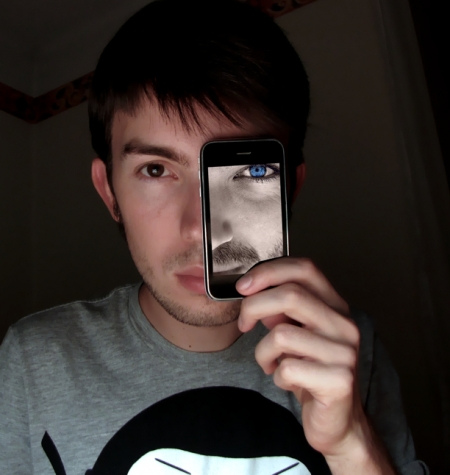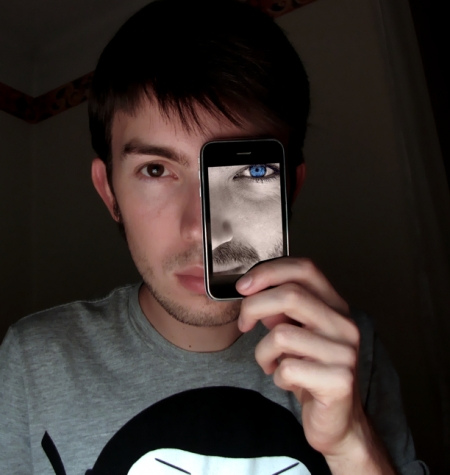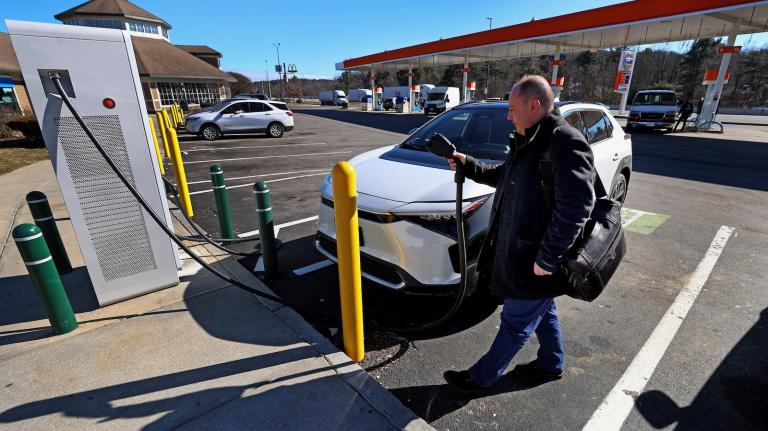 Somebody’s watching you.Photo: Rego KorosiThere’s been a spate of videos showing New York area transit riders behaving badly lately.
Somebody’s watching you.Photo: Rego KorosiThere’s been a spate of videos showing New York area transit riders behaving badly lately.
In one, two women get into a brawl on the subway after one tells the other to stop eating spaghetti (it’s no longer available for viewing, but you can see a screengrab here). Another example making the rounds over the last couple of days shows a woman on a New York City bus berating the driver in very NSFW language for asking her to stop playing music on her cell phone.
My favorite, though, is of this woman on a Metro-North commuter train, who has been asked to stop talking so loudly on her cell phone. Her claim that “I’m not a crazy person, I’m a very well-educated person” is probably true. What seems pretty clear is that she is also capable of acting like a complete jerk.
It’s not just a New York thing, or just a transit thing either (so all you transit haters can just back off). There’s video of people acting like idiots in malls, parking lots, and streets all over the country.
The prevalence of phones that can shoot video as well as photos is changing the way we inhabit public space. Ever since 9/11, we’ve been reminded, “If You See Something, Say Something.” Now we are taking it to the next level. If we see something, we are going to record something, and maybe get some viral YouTube jollies as a result.
Just a few years ago, people worried a lot about the impact that video surveillance by governments and businesses has on our right to privacy (the next generation of New York subway cars will actually have video cameras built in). But videos taken by private citizens are perhaps making an even bigger difference in our relationship to public spaces. The intimate nature (and good-quality audio) of the transit videos I mention above reveals much more about a person’s actions than any street-corner camera could.
The latest big public event where this became apparent was the Vancouver hockey riot of June 15. Photos and video shot by bystanders and participants led to the exposure, arrest, and shaming of many present — and in at least one case, resulted in threats against a young man and his family.
Wendy Waters, who blogs at All About Cities, wrote a post about the fallout from the Vancouver riot called “Time for lessons in urban mob temptations”:
Acceptable behavior in a large crowd needs to be taught. One lesson for young people is that you may be tempted to join in antisocial or criminal behavior when others are doing it — but don’t. The long-term consequences are too great (as they are with drinking and driving). You will be caught in photos and video, whether people’s iPhones or HD surveillance video. You could be charged by police, but even if you avoid that, everyone will know what you did. The young Vancouver rioters face having their name on a permanent list that will forever be on the internet of those who looted stores or burned cars.
The great 20th-century urbanist Jane Jacobs wrote powerfully of the need for “eyes on the street” — people who keep their neighborhoods safe by watching over them and being present on porches, stoops, and sidewalks.
She couldn’t have imagined that these eyes would eventually be equipped with portable recording devices and a system for instantaneously broadcasting what they saw to the entire world. What would she have thought?
Is the anonymity of the big city vanishing? Is this a good thing or a bad thing? I’m curious to know what you think.


